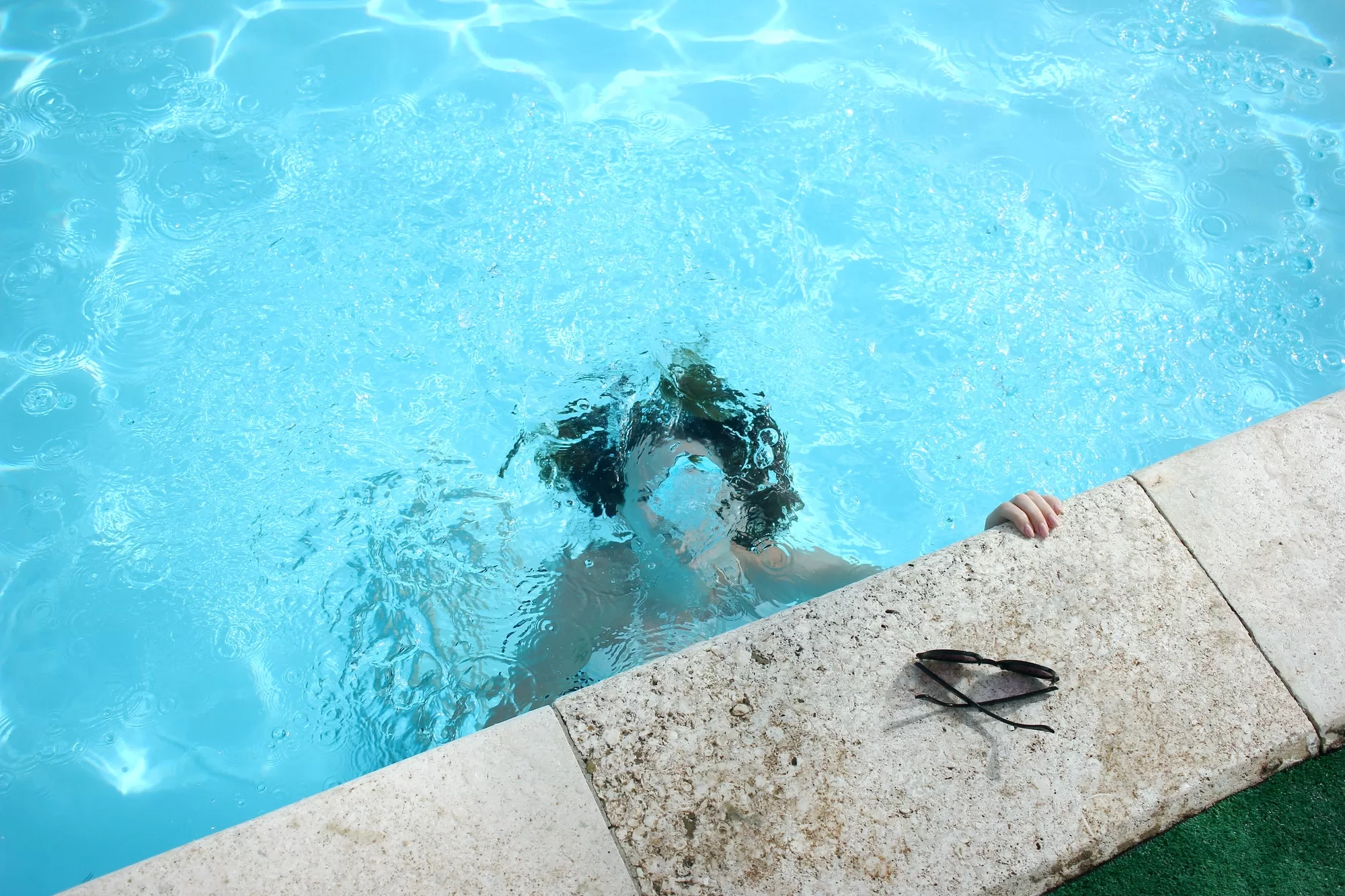As a professional freediver and travel blogger, I’ve experienced firsthand the allure and profound benefits of breath-holding. This skill, central to my underwater adventures, offers not just a gateway to the serene world beneath the waves but also enhances mental focus and physical endurance. However, mastering the ability to hold your breath for over 5 minutes is no small feat. It requires dedication, technique, and a deep understanding of your body’s capabilities and limits. Many enthusiasts are drawn to this challenge, seeking to push their boundaries and explore the underwater realm in its purest form. In this guide, I’ll share five key tips that have been instrumental in my journey, allowing me to safely extend my breath-holding duration. These insights are gleaned from years of practice and learning, tailored for those who aspire to delve deeper into the art of breath-holding.
1. Gradual Training and Conditioning
The journey to holding your breath for over 5 minutes begins with gradual lung capacity enhancement. It’s crucial to understand that like any form of training, improving your breath-holding ability is a gradual process. You can’t rush it. Here’s a step-by-step approach that I’ve found effective:
- Start Small: Begin by timing how long you can comfortably hold your breath. This initial duration is your baseline.
- Incremental Increases: Gradually increase your holding time. Aim for increments of 5-10 seconds. It’s not about how quickly you progress, but about consistent improvement.
- Regular Practice: Consistency is key. Dedicate specific times daily or weekly for breath-holding exercises. Remember, regular, shorter sessions are more effective than sporadic, longer ones.
- Balanced Frequency: Strike a balance in your training frequency. Overdoing it can lead to burnout and undertraining won’t yield significant improvements. Listen to your body and adjust accordingly.
- Monitoring Progress: Keep a log of your durations. Not only does this help track progress, but it also keeps you motivated.
A common question is, “How often should I train?” This varies depending on individual capacity and goals. However, a good starting point is 3-4 times a week, ensuring you have rest days in between. As your lung capacity and endurance improve, you can adjust the frequency and duration of your training sessions. Remember, the goal is gradual improvement without risking your health or well-being.
2. Proper Breathing Techniques
Breathing techniques play a pivotal role in extending breath-holding capabilities. Among various methods, diaphragmatic breathing is a cornerstone technique that has significantly enhanced my own free diving experiences. This technique involves deep breathing that engages the diaphragm, allowing for a more efficient oxygen exchange.
How to Perform Diaphragmatic Breathing:
- Find a Comfortable Position: Sit or lie down in a relaxed posture. Place one hand on your chest and the other on your abdomen.
- Inhale Slowly: Breathe in slowly through your nose, ensuring that your abdomen rises more than your chest. This indicates that the diaphragm is pulling air into the bases of your lungs.
- Pause: Hold your breath for a moment.
- Exhale Gradually: Release the air slowly through your mouth or nose, feeling the abdomen lower.
- Repeat: Perform this cycle for several minutes, focusing on the rhythm and depth of your breaths.
Practicing this technique regularly can significantly increase your lung capacity by ensuring a full oxygen intake and efficient carbon dioxide expulsion. Additionally, it enhances relaxation, which is crucial for prolonged breath-holding.
Incorporating Diaphragmatic Breathing into Daily Routines:
- Morning Routine: Start your day with 5-10 minutes of diaphragmatic breathing. This not only prepares your lungs for the day but also sets a calm, focused tone.
- Pre-Dive Prep: Before diving, perform a few minutes of diaphragmatic breathing to maximize oxygen levels and calm your mind.
- During Work Breaks: Take short breaks to practice this breathing. It’s a great way to relieve stress and keep your lungs in top shape.
- Before Sleep: End your day with this calming exercise to improve sleep quality and lung function.
As someone who relies on breath-holding for exploring the depths of the seas, I’ve found that integrating these techniques into my daily routine has been instrumental in enhancing my diving and overall well-being.
3. Mental Focus and Relaxation
The ability to hold your breath for extended periods is as much a mental challenge as it is a physical one. In my diving experiences, I’ve learned that the mind plays a crucial role in determining how long you can resist the urge to breathe. A calm, focused mind can significantly extend your breath-holding capacity.
Techniques for Mental Relaxation and Focus:
- Meditation: Regular meditation is a powerful tool for cultivating mental discipline and focus. Start with short sessions of mindfulness or focused-breathing meditation, gradually increasing the duration. This practice helps in managing the instinctive panic response during prolonged breath-holding.
- Visualization: Visualization techniques involve imagining a peaceful and safe environment. This mental exercise can be practiced before and during breath-holding sessions. For example, visualize yourself swimming effortlessly alongside marine life, in harmony with the water.
- Mind-Body Connection: Engage in activities that enhance the mind-body connection, such as yoga or tai chi. These disciplines not only improve physical flexibility and strength but also foster a state of mental calmness and concentration.
Correlation Between a Calm Mind and Breath-Holding Capability:
A calm mind reduces the body’s oxygen consumption. When you’re relaxed, your heart rate slows down, reducing the need for oxygen and allowing you to hold your breath longer. Anxiety, on the other hand, increases heart rate and oxygen demand, thereby shortening breath-holding duration.
Examples of Relaxation Routines for Breath-Holding:
- Pre-Dive Relaxation: Before diving, engage in a short meditation or visualization session. This prepares the mind for the upcoming challenge.
- Breathing Sync with Relaxation: Combine diaphragmatic breathing with mental relaxation techniques. This synchronization enhances the relaxation effect.
- Regular Relaxation Practice: Incorporate relaxation techniques into your daily routine. Consistent practice improves your ability to stay calm under pressure, a skill essential for extending breath-holding times.
In conclusion, developing mental strength through relaxation and focus techniques is as important as physical training for successful breath-holding. This holistic approach has been integral in my journey as a freediver, enabling me to explore the underwater world in a more serene and prolonged manner.
4. Physical Fitness and Diet
In the realm of freediving, your physical fitness level and dietary habits play a significant role in your breath-holding abilities. A well-conditioned body and a lung-friendly diet are key components in achieving and surpassing the 5-minute mark.
Role of Physical Fitness in Breath-Holding:
- Cardiovascular Health: A strong cardiovascular system improves the efficiency of oxygen utilization in the body. Activities like swimming, jogging, or cycling enhance heart and lung function, directly impacting breath-holding endurance.
- Core and Diaphragm Strengthening: Exercises that strengthen the core and diaphragm, such as planks or specific yoga poses, aid in better breath control. A strong diaphragm ensures more effective breathing techniques, crucial for freediving.
Types of Exercises for Improved Lung Function:
- Aerobic Exercises: Regular aerobic exercises increase lung capacity and stamina. This could include swimming, which is particularly beneficial as it also acclimatizes the body to water.
- High-Altitude Training: If accessible, training at higher altitudes can be beneficial. It conditions your body to operate efficiently with lower oxygen levels.
Dietary Tips for Lung Health and Oxygen Utilization:
- Antioxidant-Rich Foods: Consume foods high in antioxidants, like berries, nuts, and leafy greens. These help protect lung tissue and improve overall lung function.
- Hydration: Adequate water intake is crucial. Hydration plays a key role in maintaining optimal blood flow and oxygen delivery.
- Balanced Diet: Ensure a balanced diet with a good mix of proteins, carbohydrates, and healthy fats. This balance is vital for energy and endurance.
Impact of Fitness and Diet on Breath-Holding:
A fit body utilizes oxygen more efficiently and manages carbon dioxide buildup better, allowing for longer breath-holding periods. Simultaneously, a diet that supports lung health enhances this capability. As a travel blogger and freediver, I’ve noticed a significant improvement in my breath-holding times when I maintain a regular fitness regime complemented by a lung-supportive diet. This holistic approach has not only improved my diving experiences but has also positively impacted my overall health and well-being.
5. Safety Precautions and Limits
While the pursuit of extending breath-holding times can be exhilarating, safety must always be the paramount concern. As someone who has navigated the depths of the oceans, I cannot stress enough the importance of recognizing and respecting your body’s signals and limitations.
Key Safety Precautions:
- Awareness of Warning Signs: Be vigilant about symptoms like lightheadedness, excessive discomfort, or confusion. These are indicators that you need to surface and breathe. Ignoring these signs can lead to serious consequences, including loss of consciousness.
- Never Dive Alone: Always have a partner or be under professional supervision when practicing breath-holding, especially in water. A buddy system ensures immediate assistance if something goes awry.
- Understand and Respect Your Limits: Everyone’s capacity for breath-holding is different. It’s crucial to understand and respect your personal limits. Pushing too far can lead to hypoxia (insufficient oxygen reaching the brain), which can have severe consequences.
- Professional Guidance: For those serious about advancing their skills, seek guidance from a certified freediving instructor. They can provide tailored advice and ensure you’re practicing safely.
Mastering the art of holding your breath for over 5 minutes is a journey that combines physical training, mental discipline, and a deep understanding of safety protocols. The five key tips — gradual training, proper breathing techniques, mental focus and relaxation, physical fitness and diet, and stringent safety precautions — form the foundation of this endeavor. As you embark on this journey, remember to practice patiently and safely, always listening to your body and respecting its limits. I encourage you to share your experiences and questions in the comments below. Let’s dive into this journey together, exploring the fascinating world beneath the waves with respect and caution.
FAQs:
- Q: How long does it typically take to increase breath-holding time to 5 minutes?
- A: The time it takes to reach a 5-minute breath-hold varies greatly among individuals, depending on factors like baseline lung capacity, physical fitness, and the frequency and consistency of practice. Generally, with regular and proper training, noticeable progress can be seen over a few months.
- Q: Is it safe to practice breath-holding alone?
- A: Practicing breath-holding alone, especially in water, is not recommended due to the risk of shallow water blackout. It’s crucial to always have a partner or professional supervision for safety.
- Q: Can everyone achieve a 5-minute breath-hold?
- A: While many people can significantly improve their breath-holding times with training, individual physical differences mean that not everyone will reach the 5-minute mark. It’s important to set realistic goals based on personal capacity.
- Q: Are there any medical conditions that preclude practicing extended breath-holding?
- A: Yes, certain medical conditions, especially those related to respiratory, cardiovascular, or neurological health, can make extended breath-holding risky. It’s always advised to consult with a healthcare professional before starting such training.
- Q: How often should I practice breath-holding exercises?
- A: A balanced practice schedule would involve training 3-4 times a week. This frequency allows for adequate rest and recovery, which is crucial for progress and safety.
- Q: Can improving my breath-holding ability benefit my overall health?
- A: Yes, the techniques used to improve breath-holding, such as diaphragmatic breathing and physical fitness exercises, can enhance lung capacity, reduce stress, and improve cardiovascular health.
- Q: What should I do if I feel panicky or very uncomfortable while holding my breath?
- A: If you experience panic or significant discomfort, it’s important to immediately stop the exercise and breathe normally. Gradually increasing your tolerance in a safe and controlled manner is key. Listening to your body is crucial in this practice.




